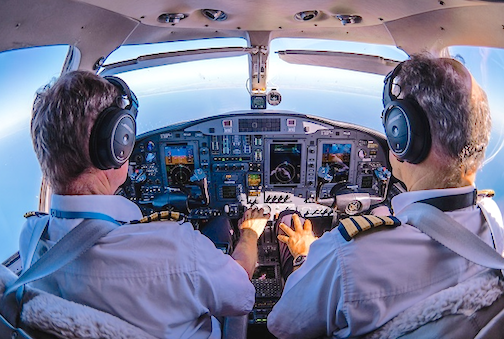
In a major show of support for the Iris program, Inmarsat has signed agreements with five major Air Navigation Services Providers (ANSPs) to modernize air traffic management (ATM) across Europe.

European airspace is among the most traveled and radio frequencies to manage flights over Europe are nearing full capacity causing delays and cancellations due to congested air traffic.
DFS (Germany), ENAIRE (Spain), ENAV (Italy), EUROCONTROL MUAC (North-West Germany, Belgium, Luxembourg and the Netherlands) and NATS (UK), who together handle the majority of European air traffic, will join an Initial Operational Capability (IOC) pilot, marking a significant milestone for the early implementation phase of Iris.
Separately, Inmarsat has also signed a contract with European Satellite Services Provider (ESSP), a company owned by European ANSPs and focused on safety of life services, in accordance with International Civil Aviation Organization (ICAO) standards.
ESSP will work with Inmarsat to help define the service and certification framework of the future Iris Service Provider, a company that will be appointed under the program to provide the European datalink communication services for Iris.
The Iris program is a partnership with the European Space Agency (ESA) and led by Inmarsat to enable secure, high bandwidth datalink communications over Europe. The objective is to deploy more digital controller-pilot communications to improve the speed and accuracy of air traffic management across Europe’s congested airspace.
ANSPs will be able to rely on Iris’ certified, efficient and sustainable datalink to increase ATM efficiency, relieve air traffic controller workload and enhance flight safety.

Courtesy Inmarsat
Iris is also designed to enable initial ‘4D’ trajectories, pinpointing an aircraft in four dimensions: latitude, longitude, altitude and time, which is one of the major concepts defined in the Single European Sky ATM Research (SESAR) modernization program.
This will enable precise tracking of flights and more efficient management of traffic by allowing pilots and controllers to collaborate on flight trajectories and calculate the shortest available routes, cruise at optimum altitudes, and use continuous climb and descent path to reduce delays, save fuel and improve the environment.
John Broughton, Vice President, Safety and Operational Services at Inmarsat Aviation, said that as they enter the early implementation phase of Iris, the range of ANSPs that have committed to further its development is testament to the program’s significance to the European and global aviation industry.
Broughton continued that Iris is a truly collaborative partnership, and they are delighted to bring on board these industry-leading ANSPs to help deliver their shared goal of modernizing air traffic management in Europe.
Magali Vaissiere, Director of Telecommunications and Integrated Applications, ESA, added that the satellite-based Iris system is a key element for a successful implementation in Europe of the Air Traffic Management Data Link Services (DLS) with the outlook to become a global worldwide solution. They are extremely pleased that key European Air Navigation Service Providers have taken the challenge to exploit and strengthen the opportunity that Iris is offering for the benefit of European citizens now and in the coming years of digitalization.

